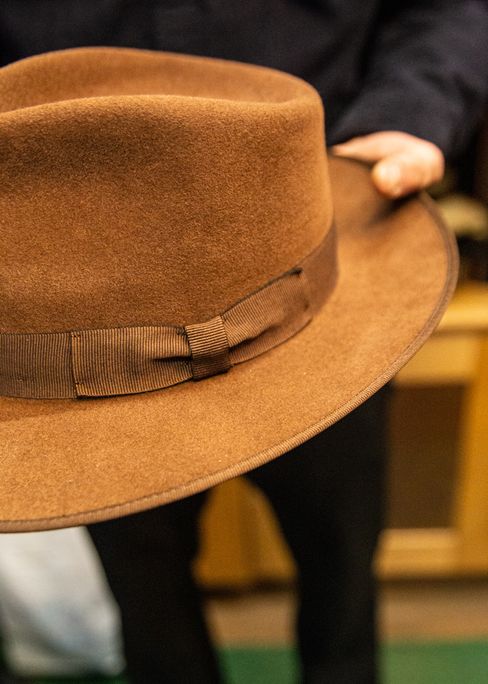Can you briefly explain the processes involved in manufacturing the hats?
Hats are formed from a felted hood. We have our own signature hat blocks and forms, which have to be heated to mould and shape each individual style. The felt now takes on a hat shape, the brim needs to be trimmed and finished. We then add the sweatband, lining and finally the ribbon.
The cap process involves cutting the cloth from our pattern shapes. We then hand stitch these pieces, add the lining, peak, sweatband and of course our Laird copper stud. This is finished off by steaming and shaping the cap on a wooden block, and tacking the peak. I still hand finish every single cap that leaves our workshop. It’s surprising quite how many component materials there are in a single cap.
Where do you find inspiration for the designs?
I am a collector of fashion magazines - GQ, Vogue etc - from the 1960s, ‘70s and ‘80s. I’m also a massive fan of TV series and films from that same legendary period. It’s rich in wild hats and caps, strong looks and colour - both flamboyant and suave.
I’ve become an historian of hats largely dating back to the early 19th century - from the bowler hat to the fedora and flat cap. There are great oddities such as the 1571 Act of Parliament, which made every ’common’ man (every male from the age of 6!) wear a cap to use up the wool surplus. It is fascinating and part of our British social history.
How has the significance of the hat evolved over time and what do you consider it to be today?
Headwear’s genesis went from utilitarian grey and drab up to the 1960s, both dying a death and rejuvenating within a decade. Rising from the ashes as a fashion accessory, and rock 'n' roll emblem of freedom. Over the last 10 years with famous series, like Mad Men, the trilby came back as a sartorial must-have piece. Peaky Blinders has now taken that a step further with the fusion of 1920s and contemporary styling for the cap. It has brought headwear to a new multi-generational audience. We get customers ranging from teenagers to octogenarians asking to look like Don Draper or Thomas Shelby. The vintage and retro movement in fashion is almost a protest to fast fashion which champions hat and cap wearing as integral pieces. Quality made to last, made in England, and slow fashion has never been more popular.
There is much talk and discussion about sustainability, recycling - we don’t make hats from recycled water bottles, or caps from recycled cotton Y-fronts; we source local cloth from British wool, then handcraft our caps to last a lifetime. What’s more sustainable than that?!






